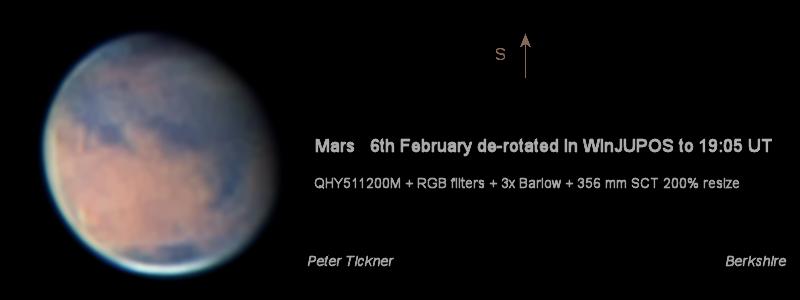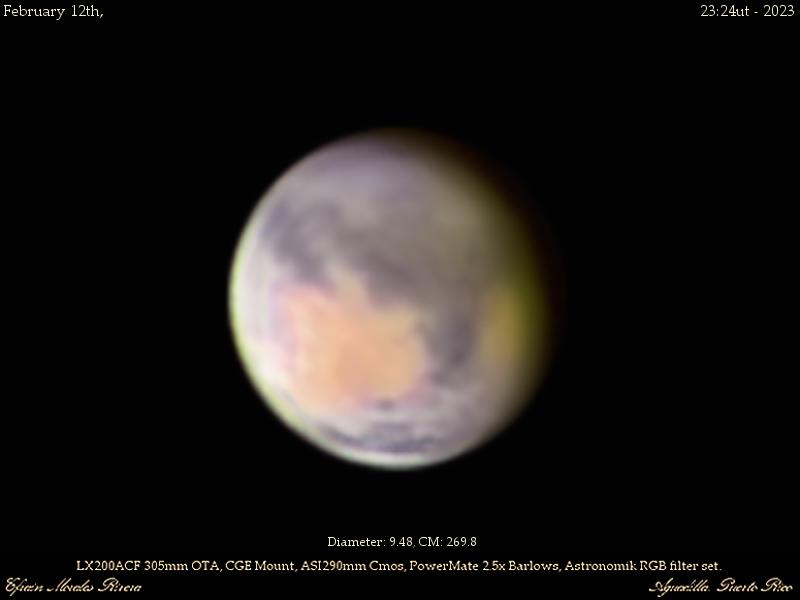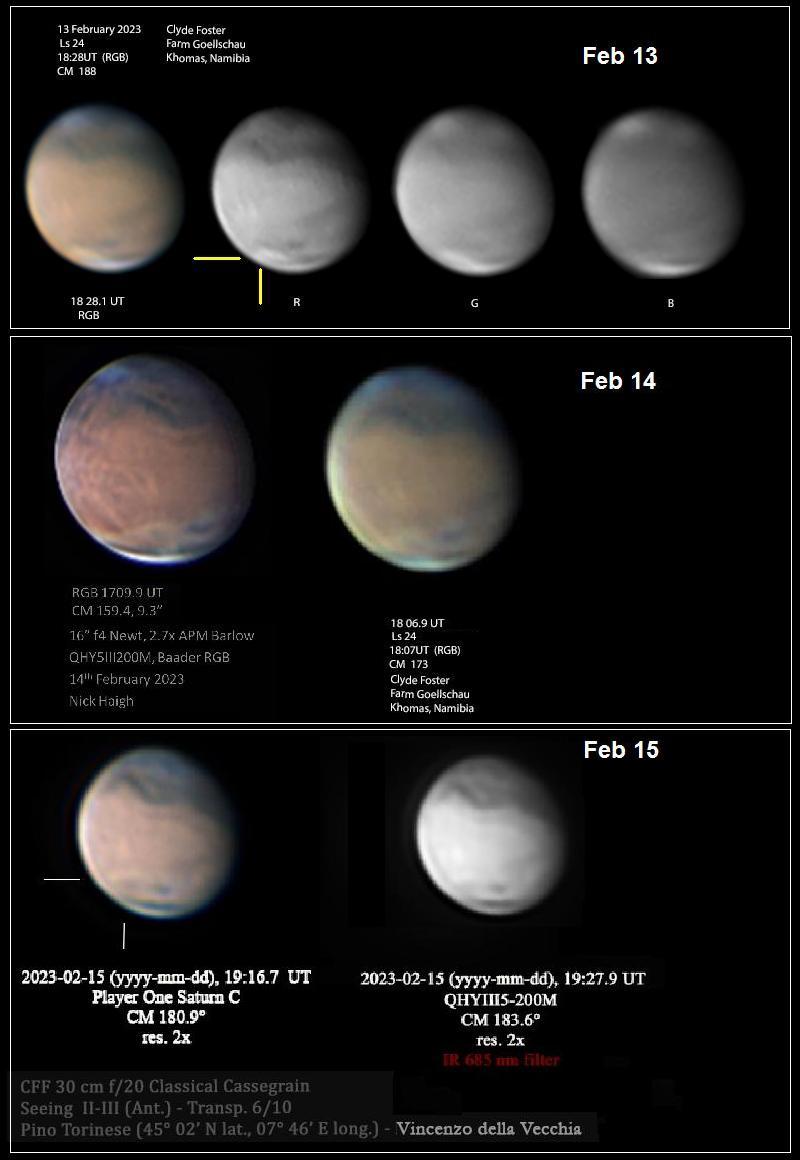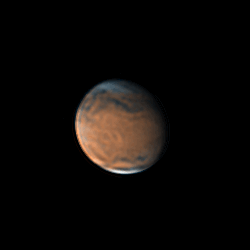2023 February 19
Mars Opposition Blog 19 February 2023
With the arrival of batches of drawings from M.Green, A.W.Heath and P.Lyon the total number of observers has risen to 107. I have counted up all the images and drawings submitted and the total is just over 8,000, a very good result indeed for an opposition like the current one.
The southern white cloud areas (of which those over Ausonia, Hellas, Noachis and Argyre have been especially noticeable) have lately joined together to form a more or less continuous hood over the S. polar region.
Orographic clouds continue to be prominent, though we can now no longer watch the sunset terminator where they would be shown to the best advantage. For example see the nice image of Elysium Mons by P.Tickner on Feb 6. Morning clouds have been well placed for observation, and one has been dimming the Syrtis Major as it rises. The blue-violet images are characteristic for the beginning of the period when the Equatorial Cloud Band becomes more prominent across the disk.
As Utopia-Casius is coming back into view with the fall in the southward value of De, its southern tip appears quite flattened. See the image of E.Morales for Feb 12 (and Tickner’s of Feb 6). It will be remembered that some dust activity around Nodus Alcyonius was reported in a recent blog post.
We followed another small dust event at the S. edge of the NPC, east of Propontis. Attention was drawn to it on Feb 13 by C.Foster, whose images I have uploaded here in the collage covering Feb13-14-15. (As ever the dust is brightest in red, bright in green and inconspicuous in blue, and a yellow tint is visible in the colour image.) Several observers quickly responded to the call I sent out for additional observations. P.Tickner (UK) was able to take a useful image, while A.Snook (UK) and J.Warell (Sweden) just captured it at the evening limb.
Next day (Feb 14) Foster recorded only a small curved arc of bright yellowish dust in the original longitude; his RGB image – together with a higher resolution one obtained by N.Haigh from the UK – is posted here. A good image was secured by Tickner. K.Howlett (UK) was able to image it successfully too, and C.E.Pellier kindly sent me an image set by C.Viladrich (France), where it was visible near the evening limb. The dust cloud had clearly moved southwards in 24 hours. This movement and dispersal is shown more strikingly in the animation by N.Haigh posted here, with both images having been derotated to the same CM longitude (159.4 degrees).
On Feb 15 there were several observations made, including an image set by V.della Vecchia (Italy), whose work is posted here. Useful images were also taken by R.Sedrani (Italy).
On Feb 16 della Vecchia and others obtained images showing the dust was static and fading, which P.G.Abel could just confirm visually using a high magnification. For reasons of longitude, observers in Japan and the USA could not watch the event.
By the end of this month the sign of the sub-Earth latitude, De, will favour observation of the N. hemisphere. The shrinkage of the N. polar cap will be worth watching for those still able to observe. Visual observers ought to be able to do something useful with the disk diameter above 6 arcseconds until late April, and hopefully some imagers will go on for longer. The declination of the planet still favours N. hemisphere observers.
Observation is now becoming more challenging. Every result will be appreciated, and the recent dust event shows that Mars can give us some surprises even in northern spring!




| The British Astronomical Association supports amateur astronomers around the UK and the rest of the world. Find out more about the BAA or join us. |
